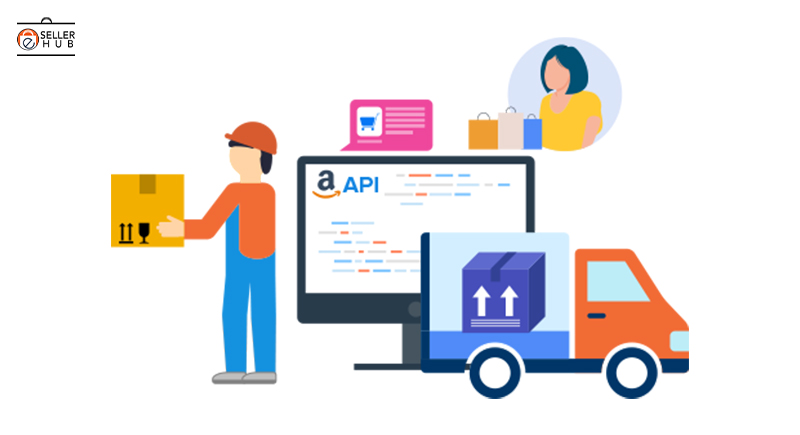How To Migrate From Amazon MWS to Amazon Selling Partner API
- by eSellerHub

For more than a decade Amazon’s Marketplace Web Services (MWS) has been the only possibility for interfacing programmatically with Amazon seller accounts.
Sellers can regulate the whole thing about Amazon stores via MWS, from inventory management to getting information on orders to fulfillment handling.
It’s a great tool since it allows sellers to handle more extensive inventories and order volume, adjust prices automatically to stay competitive, and perform other bulk operations.
Now in place of MWS, Amazon has introduced the Amazon Selling Partner API (SP-API).
The Amazon SP API is a REST-based system through which data like listings, payments, orders, reports, etc., can be gained access for software applications. The new API enables the sellers to automate access to data for enhanced selling efficiency, explore insights, and get more sense of their data.
They can determine when the customers will be more likely to make a purchase, make better inventory management decisions, and ad spending can be optimized, generate special offers and promotions.
Why Transition from MWS to SP-API?
WS has some downfalls, though. It’s an API based on XML, a design that was pushed aside when JSON-based APIs turned out to be more popular in the last decade. XML enforces more compulsory structure on every API request than JSON, resulting in additional layers of abstraction over HTTP.
It also is static with non-adjustable rate boundaries. The error-handling process is cumbersome. Whenever a data file is sent to MWS, you have to wait until the processing is completed, and only then it pulls down another file that shows errors to particular lines in the uploaded file.
What is the Selling Partner API (SP-API)?
SP solves all the problems and offers more features. Some of the new features are as follows:
- A RESTful interface is available that functions through standard HTTP methods.
- A REST-based service with JSON-based input and output format is present.
- Dynamic usage plans enable you to increase rate limits as your business grows. Therefore choosing API operations to stay
- below a static limit is not required.
- It offers improved authentication and permissions handling. You can specify granular permissions. The API tokens are presented through AWS IAM3 in place of a complex registration process.
- A sandboxed version of the API is available so that you don’t have to test your code on production data which is a highly tedious process.
- It provides new endpoints that are supported in all regions.
- Step-wise instructions are presented in the SP-API Developer Guide for generating SDK automatically.
- A sandbox feature with individual sandbox endpoints is present. Mock data testing is also available.
- Single Selling Partner API applications are applied throughout the entire region.
- Support for Restricted Data Tokens is present, which aids in safeguarding the customers’ Personally Identifiable Information (PII).
New APIs in the Selling Partner API include
- Authorization API – Exchanges a current MWS auth token with an SP API LWA auth code.
- Solicitations API – lets sellers send less important solicitations to customers.
- Messaging API – Allows sellers to send supported message types to customers.
- Notifications API – obtain notifications on new ASIN changes. Let the developers get information about changes happening in the ASIN detail page content.
- Sales API – Enables sellers to create reports on Sales history.
- FBA Small and Light API – offer FBA small and light program support.
- FBA Inbound Eligibility API– Compliments the inbound workflow of Fulfillment by Amazon (FBA) by allowing selling partners to check ASIN eligibility for partaking in FBA before generating inbound shipments.
- FBA Inventory API – Improved FBA inventory API available with a new feature for FBA sellers.
Steps to Migrate from MWS to SP API
The following steps refer to how you can migrate from Amazon MWS to Amazon SP API.
- Step 1. Register your MWS App as a hybrid application – Change your present Amazon MWS application into a hybrid Selling Partner Application.
- Step 2. Authorize a Selling Partner API application – Implement the Authorization model for Selling Partner APIs (OAuth 2.0).
- Step 3. Connect to Selling Partner APIs – Implement linking to APIs by utilizing the Selling Partner endpoint.
- Step 4. Integrate with Selling Partner APIs (SP-API) – Integrate your application with the Selling Partner endpoints.
- Step 5. Publish your Selling Partner Application in the Marketplace Appstore – Publish the hybrid version of your application.
- Step 6. Migrate MWS authorizations to Selling Partner API (SP-API) – Migrate your MWS Seller Authentications to Selling Partner API Authorizations.
- Step 7. Migrate your MWS API calls to Selling Partner endpoints – Migrate your API calls from MWS to Selling Partner endpoints.
Wrapping it Up
If you’re a seller or developer currently working with an MWS application, you need not worry. Amazon will not be deprecating MWS immediately. You can incrementally move your application from MWS to SP, as there will be guidance offered for hybrid Selling Partner applications that make use of both SP and MWS in unison.
However, Amazon does mention that “the legacy Amazon MWS APIs will be deprecated shortly,” so it is best to get ahead of the issue at the earliest.
For guided assistance from our Amazon SP API experts or any queries in sorting out the Selling Partner API migration, reach our experts now! Call us at +1 408 600 0534 or drop an email at contact@esellerhub.com.